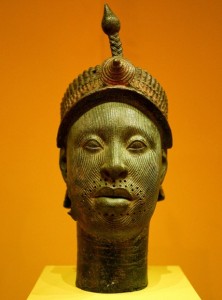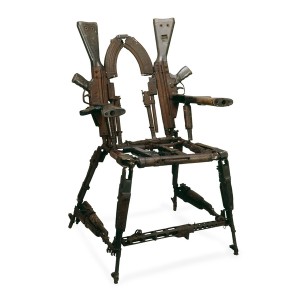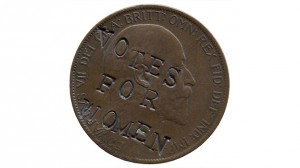The Legal Treasure Tour (read about this approach here) started at approximately 11am at the British Museum. The group was led by Sophie Vigneron & Prof Amanda Perry-Kerssaris from Kent Law School. The primary aim of the tour was to engage with each cultural and ancient art piece from a legal context, finding meanings in relation to the rule of law and governance.
Making our way through in locating the first treasure piece, the group had the opportunity of seeing other historical pieces. Beneath the museum lies the basement which had all African Cultural works. Below are the primary six Art/pieces which were focused on.
Firstly: The Ife Head
Theme: Rule of Law within
- The Ife title was formed in the Yoruba part of Nigeria according to their ancestral beliefs.
- The brass head was discovered in 1938 at Wunmonije Compound in Ife.
- This piece portrays the picture of an individual who had strong charisma and total control of his subjects.
- It is highly recognized in the Yoruba lands
Secondly: Thrones of weapons
Theme: After (to the Head’s before). Wounded, but hopeful
- The thrones of weapons made from decommissioned weapons with its origins from Mozambique
- The civil war which broke out in the 90’s was fuelled by the Portuguese colonial regime who was unsuccessful in destabilizing the country.
- This piece was constructed out of parts of guns made from abroad and brought to Africa. To some extent the components reflects the international arms trade,
- The main feature is the Russian AK47 rifle at the (arms) of the chair, Polish and Czech rifles (seats), and a North Korean AKM (one leg).
- The throne has an added significance in Africa where carved stools and chairs are symbols of power and prestige. Examples from Ghana, the Congo and Zanzibar, for example, may be seen in the African collections of the British Museum.
- This piece was made in commemoration of lives lost during the violence
Thirdly: Pillar of Emperor Ashoka
Theme: Spreading the word of the rule of law
- The Pillar of Ashoka originates from India
- Emperor Ashoka was the most famous king of the Mauryan Empire. He was known for his cruelty and hedonism. However as a result of the massacre which occurred during one of his conquests, he was inspired to renounce violence therefore treating all equally regardless of rank or religion
- The text on huge columns across Empire was intended as public address system for spreading the world and was also written in local languages.
- This is the rule of law that was somewhat in existence before the birth of A.V Dicey’s version (1885)
Fourthly: Chinese bronze bell
Theme: Music aimed at restoring harmony
- The Chinese bronze bell originates from Shanxi province of China c.600-500 BC
- Generally known as the ‘BO’ the bell was made using section moulds. The moulds were made out of clay
- In the ancient china, music has always been part of their culture. This was used particularly in courts or during rituals
- Bells such as the ‘bo’ was used in playing harmonizing songs.
- The legal idea behind this piece is the fact that it is used as medium of creating unity & standardization.
Fifth: Sutton Hoo shoulder clasps
Theme: The past and us
- Sutton Hoo shoulder clasps originates from Suffolk, England in the early 600’s CE.
- The decoration on each half of the clasps is nearly identical. It comprises four panels containing an extraordinary combination of geometric stepped cell-work within borders of sinuous animal ornament, all immaculately executed in garnet cloisonné, chequerboard millefiori and intense opaque blue glass.
- The clasps was also used as a protective device by both men and women in early Anglo-Saxon England
- It symbolizes ferocity, strength and courage and power
Sixth: Suffragette-defaced penny
Theme: Rule by Supervision
- Originated from the united kingdom, in 1903
- The primary idea behind this piece was to promote women rights in voting.
- By the 1880’s 60 percent of men had the right to vote but women were not allowed such rights. This starred up violence (smashing windows)
- In order to send a powerful message, a penny was used to ‘console and shock’ as appropriate.
- The female Britannia was on one side whilst male Edward the VIIth on the other. This coin circulated rapidly and by 1918 over 30 women were allowed to vote
- This piece is regarded as a powerful means of communication which flowed in all directions.
Moving on, the group was later led to the SOAS library which had various archives. The SOAS collects archives relating to four main categories which are missionaries and missionary organisations, business archives, NGOs, charities and campaigning organisations and individuals whose lives and works relate to the geographical areas of study at SOAS.
In conclusion, the group was fascinated by different historical pieces found at the museum and the collection of old materials at the archives. Besides having an educational and fun day, during the one hour break I had the opportunity of having a Thai meal for the first time.
Generally, the trip was well organised, educational and exciting.
Written By: Miss Jacinta Obinugwu Photos: British Museum website





